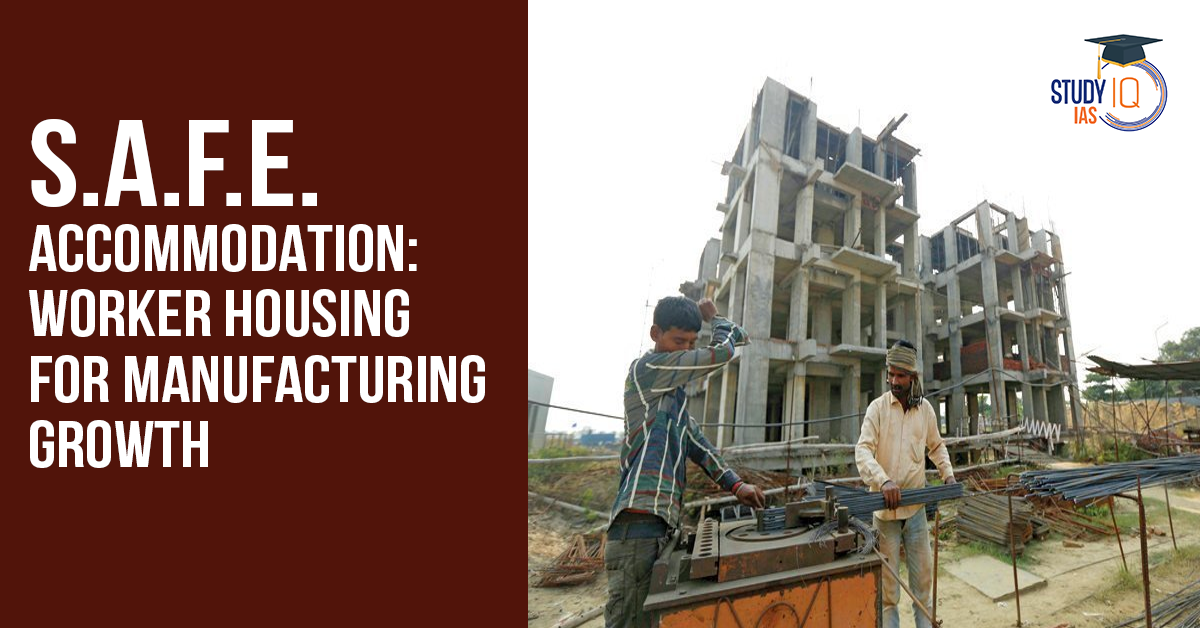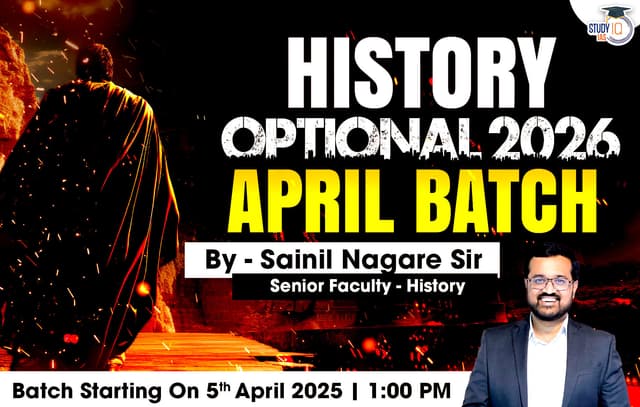Table of Contents
On December 19, 2024, NITI Aayog released a comprehensive report titled “S.A.F.E. Accommodation: Worker Housing for Manufacturing Growth”, outlining the crucial need for secure, affordable, flexible, and efficient (S.A.F.E.) accommodations for industrial workers in India. The report aims to address the housing challenges faced by the manufacturing workforce and proposes strategic solutions to support the sector’s growth.
Key Insights from NITI Aayog’s Report S.A.F.E. Accommodation
Importance of Worker Housing for Manufacturing Growth
The report highlights that India’s manufacturing sector, a key pillar in achieving the vision of a Viksit Bharat (Developed India) by 2047, faces a major barrier in the form of inadequate worker housing. A skilled and stable workforce is essential for the success of large-scale factories, which are becoming the backbone of India’s industrial growth.
The Vision for Viksit Bharat
To drive India’s economic growth, the government has set a target to increase the contribution of the manufacturing sector to GDP from 17% to 25% by 2047. As per the Economic Survey 2023-24, India needs to generate 7.85 million jobs annually, many of which will stem from the manufacturing sector. However, this growth is hindered by insufficient housing for the workforce, particularly migrant workers.
Challenges in Scaling Worker Housing
The report identifies several key challenges:
- Inadequate Housing Near Industrial Hubs: Workers are often forced to live far from their workplaces, leading to long commute times, low productivity, and high attrition rates.
- Restrictive Zoning Laws: Industrial zones typically have limited provisions for residential housing, making it difficult to provide adequate accommodations close to workspaces.
- Financial Barriers: High capital costs and low returns on investment make large-scale worker accommodation projects financially unviable for developers.
S.A.F.E. Accommodation Framework
The S.A.F.E. accommodation initiative proposes a comprehensive framework that can unlock the potential for sustainable worker housing solutions:
- Security: Ensuring that accommodations are safe and suitable for workers.
- Affordability: Providing low-cost housing that is within reach of workers.
- Flexibility: Allowing for adaptable living arrangements to meet the varied needs of the workforce.
- Efficiency: Maximizing the use of available land and resources for high-capacity housing developments.
Recommendations for Addressing Regulatory and Financial Challenges
To overcome the hurdles in scaling up worker housing, the report suggests the following measures:
Regulatory Recommendations:
- Reclassify Worker Accommodations: Worker housing should be classified as a distinct category of residential housing, ensuring the application of residential tax and utility tariffs.
- Flexible Zoning Laws: Amend zoning regulations to allow mixed-use developments near industrial hubs.
- Streamline Environmental Clearances: Include worker accommodations under exemptions for industrial facilities, making the approval process more efficient.
- Gender-Inclusive Policies: Promote housing solutions that cater to the safety and welfare of female workers.
Financial Recommendations:
- Viability Gap Funding (VGF): Provide up to 30%-40% of project costs through VGF to support the development of worker housing projects.
- Retrofitting Existing Facilities: Use VGF to upgrade and improve existing worker accommodations, ensuring they meet modern safety and capacity standards.
- Competitive Bidding: Implement transparent bidding processes to determine VGF support, ensuring cost-effectiveness and efficiency.
The Path Forward
The report emphasizes the importance of collaboration between the government, private developers, and industrialists to implement the recommendations effectively. By addressing the housing challenges, India can ensure a stable, skilled workforce that is crucial for the long-term success of its manufacturing sector.
NITI Aayog’s Report S.A.F.E. Accommodation PDF
NITI Aayog’s report on S.A.F.E. Accommodation is a call to action for all stakeholders to work together in overcoming the barriers to worker housing in India’s manufacturing sector. By implementing the proposed solutions, India can boost its manufacturing output, attract global investments, and create a sustainable, competitive workforce. The vision of Viksit Bharat is closely tied to resolving these fundamental housing challenges, ensuring that India becomes a global manufacturing hub by 2047.


 Utkal Divas 2025: Odisha Foundation Day ...
Utkal Divas 2025: Odisha Foundation Day ...
 List of Military Exercises of India 2024...
List of Military Exercises of India 2024...
 GPS Spoofing and Its Impact in India: A ...
GPS Spoofing and Its Impact in India: A ...





















